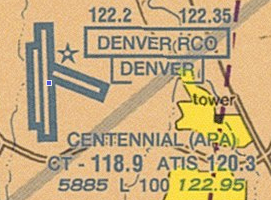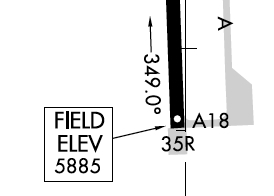A reader asked to define the difference between Above Ground Level (AGL) and Above Field Elevation (AFE). In a previous article, "What Is Field Elevation?", I discussed the definition and importance of knowing the field elevation.

As a review, the Field Elevation on the Airport Diagram references the Airport Elevation and the terms are used interchangeably. The Federal Aviation Administration (FAA) defines the Airport Elevation as the highest point of an airport’s usable runways and is measured in height above mean sea level.
Above Ground Level
AGL is the altitude expressed in the actual number of feet measured above the ground. If you could take a tape measure and measure from the bottom of your plane to the ground this would be your height above ground level (AGL).
Some airplanes have the ability to measure the distance between the airplane and the ground using a radar altimeter. The Radar altimeter measures altitude above the ground below the airplane or AGL. Most general aviation airplanes don't have a radar altimeter so we need another method of determining the proper height to fly above the ground or an object such as a tower or a building.
Example:

For example, an obstruction such as a tower will have two numbers expressing altitude printed on your sectional or terminal chart. The first is the altitude above mean sea level (MSL). The second altitude in parenthesis is the altitude above ground level (AGL). It this example there is a tower with two altitudes depicted 1549 and 1463 in parenthesis. 1549 is the height of the tower above mean sea level (MSL) and 1463 is the height above ground level (AGL). In other words 1549 is what you will read on your altimeter if you where standing on top of the tower and 1463 is the number of feet you are above the ground below.
Above Field Elevation
The second portion of the question concerns Above Field Elevation or AFE? Well this term is not used as often but it is referenced in the Federal Aviation Regulations and in the Instrument Flying Handbook . For example, 121.646 describes rules for Flag and Supplemental operations and a portion states" (3) The airplane has enough fuel to hold for 15 minutes at 1500 feet above field elevation and conduct a normal approach and landing." If the field elevation is 26 feet, 1500 above the field elevation or AFE is 1526 MSL.
Example:

We are flying into Centennial Airport in Denver, Colorado and want to enter the traffic patter 1000 feet above field elevation. Remember airport and field elevation are used interchangeably. There are many ways to determine the field elevation. We can reference the AFD, Sectional Charts, Terminal Charts, or the Airport Diagram. By looking at all three we see the Field Elevation at Centennial Airport is 5885 feet.

A simpler method to determine the traffic pattern altitude is to read it directly from the Airport Facilities Directory. Here you can see the Traffic Pattern Altitude (TPA) is 6885 or 1000 feet above field elevation as indicated by the parentheses.

Conclusion:
The terms Above Ground Level and Above Field Elevation have two very different meanings but both are important altitudes to understand. Above Ground Level (AGL) is the altitude expressed in feet measured above the ground. Above Field elevation is the height measured above the highest point on the usable runway which is depicted on our charts. Therefore, if you are flying 1000 feet Above Field Elevation(AFE) your altimeter should read 1000 plus the published field elevation. in the example above 6885 is 1000 AFE.


Comments on this entry are closed.